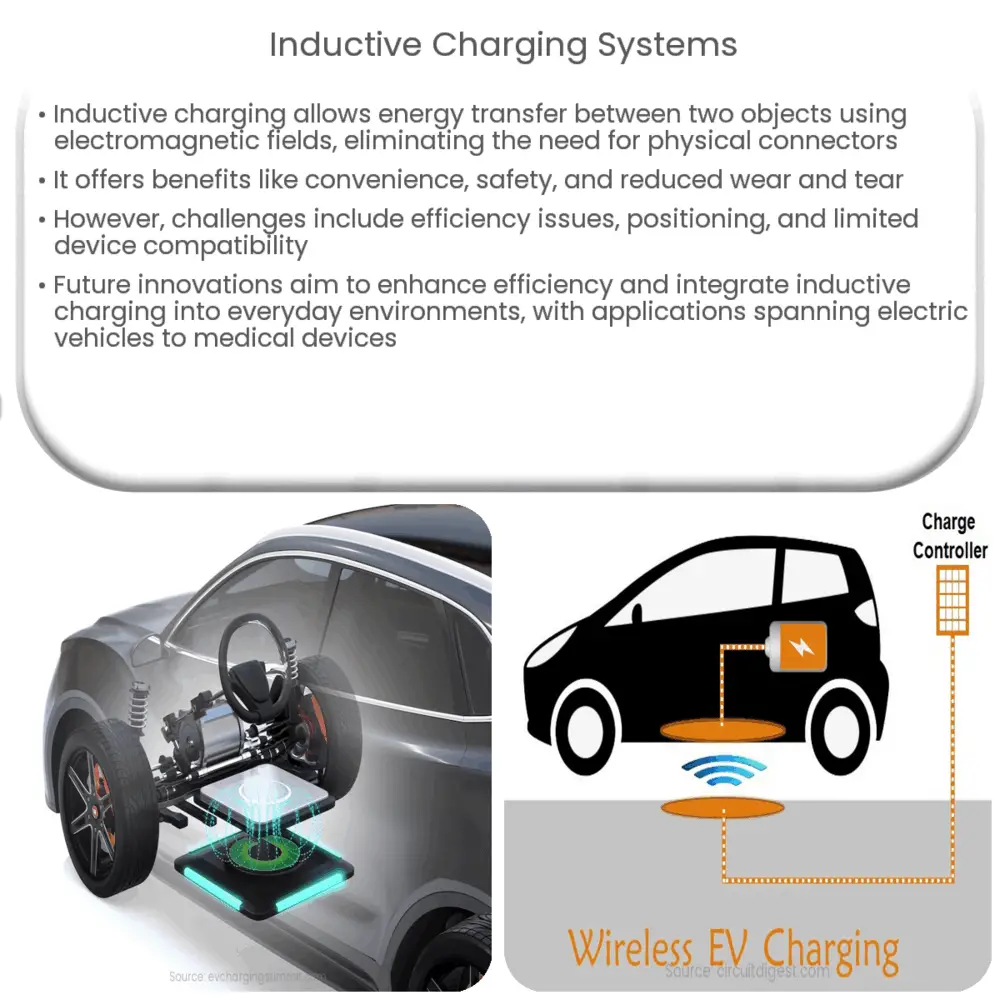Explore the world of inductive charging systems: understand their workings, benefits, challenges, future prospects, and diverse applications.

Understanding Inductive Charging Systems
Wireless charging, specifically inductive charging, has revolutionized the way we power up our electronic devices. It offers an incredible advantage by eliminating the need for physical connectors or cables, paving the way for convenience, efficiency, and a seamless user experience.
The Fundamentals of Inductive Charging
Inductive charging, at its most basic, is a process that allows the transfer of energy between two objects through the use of coils to induce an electromagnetic field. This method harnesses the principle of electromagnetic induction, where an electric current is generated across a conductor situated in a changing magnetic field. In the context of inductive charging, these two objects are typically a charging pad (the transmitter) and an electronic device such as a smartphone or an electric toothbrush (the receiver).
- Transmitter: This is the base station that generates the electromagnetic field. It’s typically connected to a power source and has a coil through which the electric current flows.
- Receiver: This is the device to be charged, which also contains a coil. This coil is responsible for picking up the current from the electromagnetic field generated by the transmitter.
Benefits of Inductive Charging
Inductive charging offers a multitude of benefits:
- Convenience: As there are no wires required, users can simply place their device on a charging pad and let the charging process begin. This eliminates the need to plug and unplug the device every time it needs charging.
- Safety: With no exposed connectors or cables, there’s a reduced risk of electrical faults. This can be especially beneficial in environments where water or humidity is a concern.
- Wear and Tear: Over time, physical connectors can wear out or become damaged. Inductive charging reduces the risk of such issues as there are no physical connections to be made.
Despite the benefits, inductive charging isn’t without its challenges, and understanding these is critical for anyone considering its use. In the following sections, we will discuss the challenges, as well as the future prospects and innovations in inductive charging.
Challenges of Inductive Charging
While inductive charging provides many benefits, it also presents some challenges:
- Efficiency: Inductive charging can be less efficient than traditional charging methods due to energy loss in the electromagnetic field. This can result in longer charging times and increased energy consumption.
- Positioning: The device must be correctly aligned with the charging pad for efficient energy transfer, which can sometimes be tricky for users.
- Compatibility: Not all devices support inductive charging, which can limit its widespread adoption. However, the proliferation of Qi standard charging in many smartphones signals a positive trend.
Future of Inductive Charging
The future of inductive charging holds great promise, with innovations being made to address its current limitations. For instance, ‘resonant’ inductive charging is being explored as a method to increase the distance of power transfer and enhance efficiency. Furthermore, scientists and engineers are working on integrating inductive charging surfaces into furniture and architecture, offering an even more seamless charging experience.
Applications of Inductive Charging
Beyond mobile devices, inductive charging has applications in numerous fields:
- Electric Vehicles: Inductive charging stations for electric vehicles are gaining traction. These solutions offer a ‘park and charge’ facility, reducing the hassle associated with traditional charging methods.
- Medical Devices: Implanted medical devices, such as pacemakers, can be powered using inductive charging, eliminating the need for invasive procedures to replace batteries.
- Industrial Automation: In industrial environments, inductive charging can power automated guided vehicles, promoting continuous operation without the need for manual battery replacements.
Conclusion
In conclusion, inductive charging is a groundbreaking technology that has the potential to transform the way we power our devices. Despite the current challenges, ongoing innovation and research are paving the way for improved efficiency, greater convenience, and broader adoption. With an ever-increasing number of applications across various fields, inductive charging is more than a novel technology—it’s a significant step towards a wireless future.



